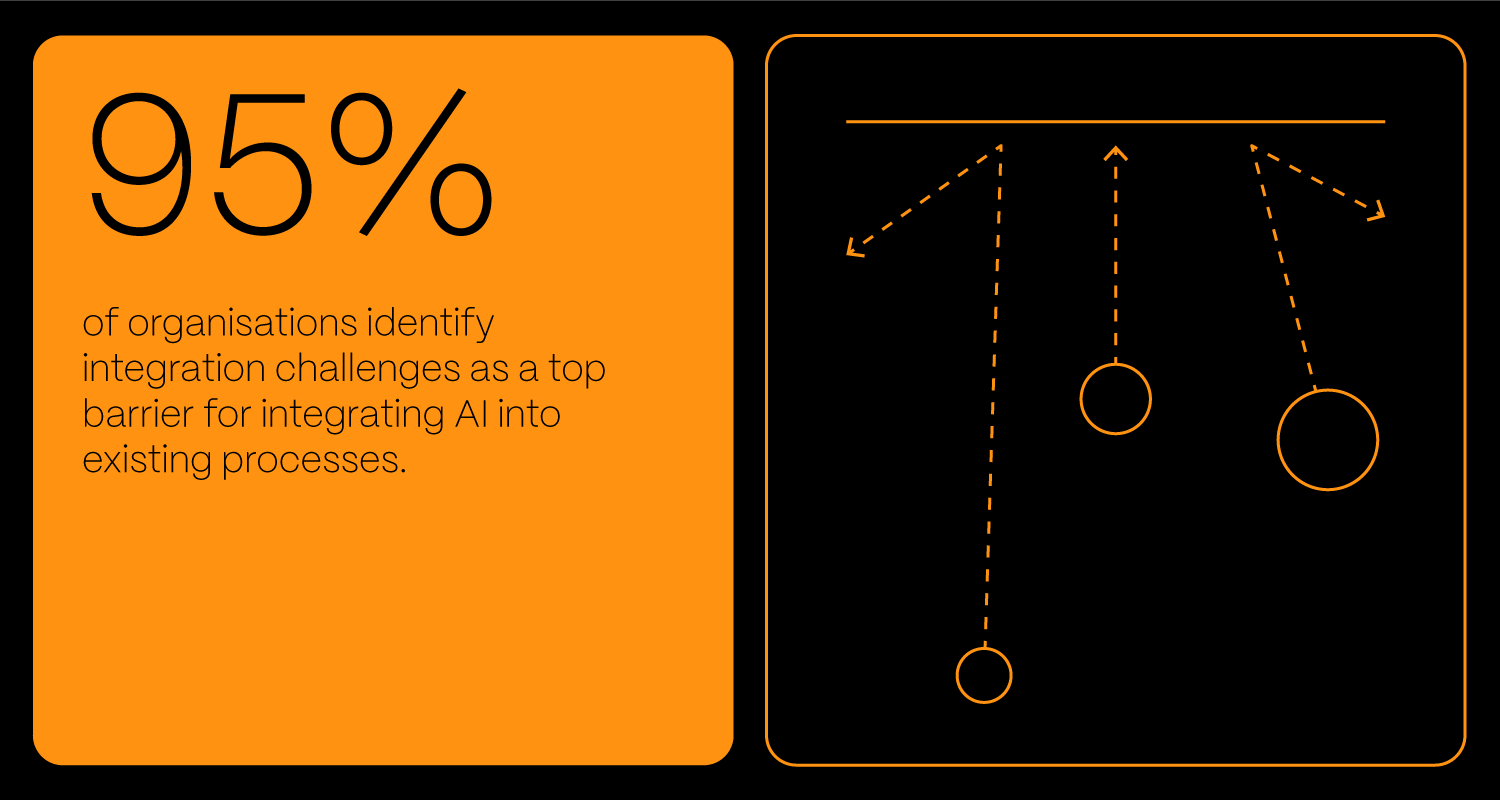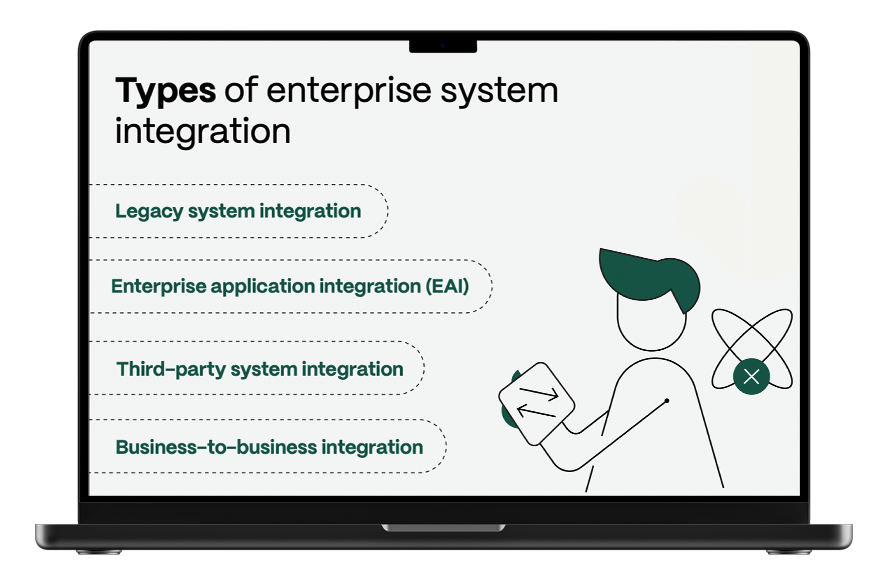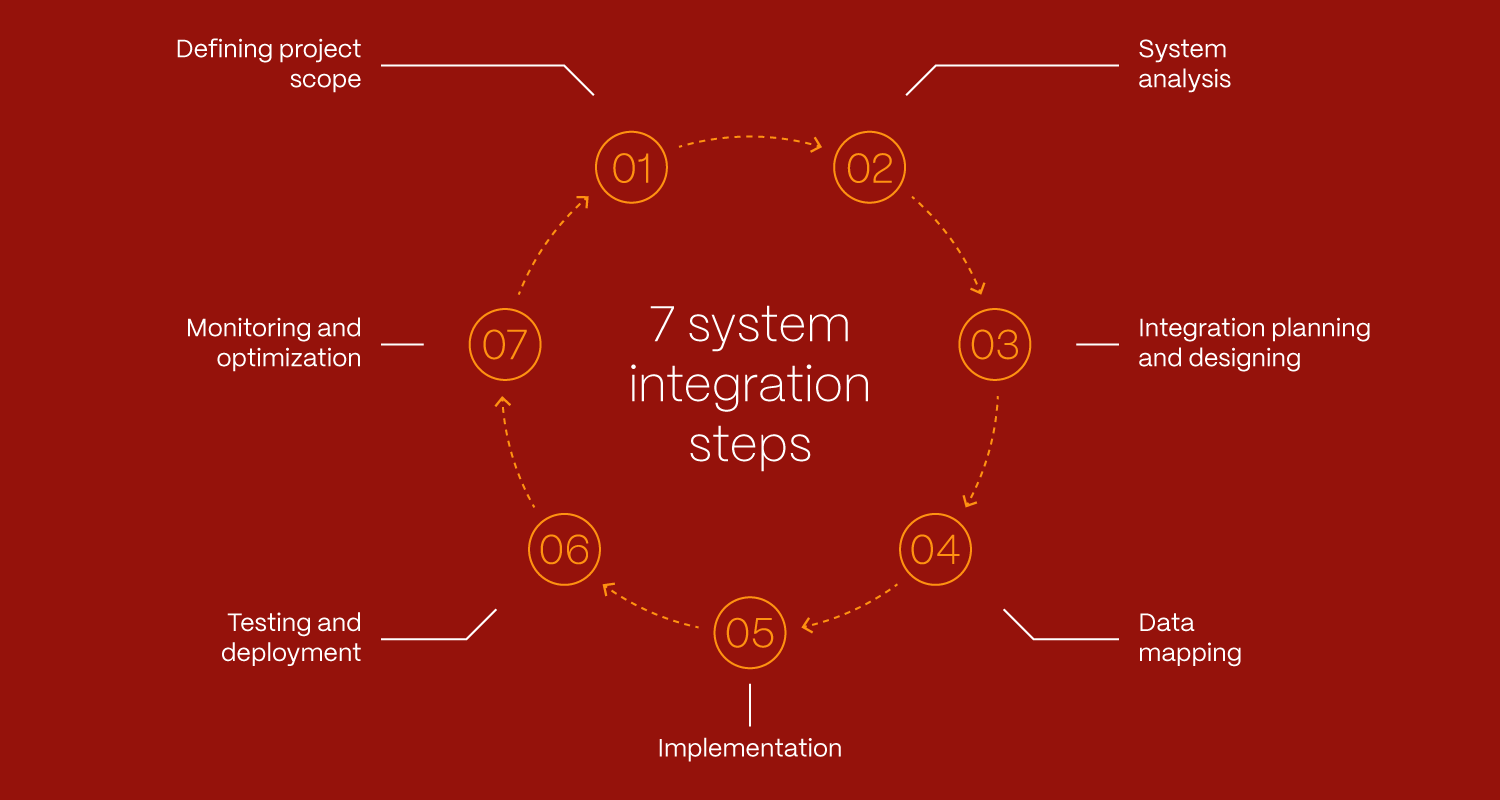Digital transformation: Integrating digital products and systems to stay ahead

In today's rapidly evolving digital landscape, 65% of global GDP is projected to be digitised by 2025. Yet, only about one-third of organisations successfully meet their digital transformation objectives.
This gap isn't due to a lack of ambition but often stems from fragmented systems and siloed digital products that hinder seamless operations. Many companies struggle to integrate new technologies into existing systems, leading to inefficiencies and missed opportunities.
For businesses aiming to invest in digital transformation, the message is clear: integration isn't just a technical necessity but a strategic imperative. Without cohesive systems, digital initiatives risk becoming disjointed efforts that fail to deliver on their promises.
In this article, we'll explore how integrating digital products and systems can propel your organisation ahead of the curve, ensuring that your digital transformation efforts are not only ambitious but also effective and sustainable.
Understanding system integration
System integration isn’t just about linking tools – it’s about designing a smart, scalable architecture that brings technologies, teams, and data into a cohesive whole.
With the right integration strategy and a solid architecture, organisations can eliminate data silos, streamline operations, and pave the way for faster innovation. Otherwise, they may face fragmented systems, clunky workflows and lost opportunities – all in a digital landscape that keeps moving forward.
The types of system integrations
System integration can take various forms, depending on the components involved, as well as the source and destination of your data. The four most common types of enterprise system integration involve:
- legacy system integration, which includes connecting on-premises systems with cloud-based applications to unify operations;
- enterprise application integration, which focuses on uniting various application databases and workflows within an organisation;
- third-party system integration, which entails incorporating external software solutions into existing systems;
- business-to-business system integration, where systems like CRM and ERP are connected to share customer data efficiently, providing centralised information for customer-facing teams.

Learn more about system integration
For a deeper dive into system integration types, specific approaches, challenges, and best practices, check out our complete guide to enterprise system integration.
Read moreWhy system integration is the real competitive advantage
As organisations implement tools for CRM, analytics, marketing automation, and operations, the real challenge lies not in the variety of software itself, but in how well it’s integrated across the business.
In short, the organisations leading the way aren’t necessarily those with the most tools, but those whose tools function as a cohesive ecosystem.
When systems aren’t connected, companies often face:
- siloed data that limits visibility across teams and departments;
- delayed decision-making due to fragmented information;
- repetitive tasks and manual workarounds that increase costs;
- a disjointed customer journey that affects satisfaction and loyalty.
On the other hand, firms with a clear integration strategy are more likely to accelerate innovation and bring new products or services to market faster.
According to joint research by MIT Sloan Management Review and Deloitte, digitally maturing organisations, those that have moved beyond early-stage digital adoption, consistently demonstrate higher levels of innovation. As a result, they are significantly better positioned to ideate, develop, and bring new products or services to market more rapidly than their less mature counterparts.
Common pitfalls that stall integration as a part of a digital transformation strategy
While the benefits of integration are clear, many organisations hit roadblocks that delay or completely derail progress.
According to MuleSoft’s 2025 Connectivity Benchmark Report, 95% of organisations identify integration challenges as a top barrier for integrating AI into existing processes.
Such pitfalls often stem from a mix of technical debt, strategic misalignment, and short-term decision making.
Here are some of the most common challenges:
Monolithic or legacy systems that don’t play nice
Legacy systems were often not designed with modern integrations in mind. They can be limited in terms of available APIs, support for new technologies, and flexibility, meaning that integration becomes a lengthy, costly, and complex process.
This often leads to slower development of new features and higher costs, as connecting legacy systems usually requires significant investment in customisation, while standardisation becomes nearly impossible.
Older systems can also pose security risks, as they may not comply with modern data protection and access standards.
Fragmented ownership across departments
A fragmented approach to system integration can create significant barriers to successful integration.
Different departments may have conflicting objectives, making it hard to align their needs with the overall integration strategy. Without clear ownership, priorities often shift, and resources are allocated ineffectively.
Budget pressures
Implementing new technologies often comes with high upfront costs – hardware, software licenses, infrastructure upgrades, integration efforts, and staff training. These expenses can quickly escalate, especially in companies with complex operations or geographically distributed assets.
But it's not just the initial investment. Budget holders also worry about ongoing costs: maintenance, vendor lock-in, cloud service fees, and the risk of costly downtime during implementation.
This tension between the pressure to modernise and the need to protect margins makes financial decision-makers cautious. They often prioritise short-term operational needs over long-term innovation, especially in industries with tight profit margins or unpredictable market conditions.
Lack of skilled resources
Designing and implementing scalable, secure integrations isn’t just about writing code. It requires a deep understanding of architecture, APIs, data security, compliance requirements, and the specific business processes being connected. It’s a cross-functional role that blends technical expertise with strategic thinking, and those skill sets are in short supply.
Such a talent shortage creates delays, increases reliance on external consultants, and makes it harder for companies to build and maintain their own integration capabilities. To compensate, many companies choose to form long-term partnerships with digital product development companies – ones that go beyond technical delivery and focus on company understanding and teamwork.
Security and compliance concerns
Every integration point increases the attack surface – more connections mean more ways for things to go wrong. Transferring data between systems, especially across cloud platforms or third-party tools, introduces real risk. Without transparent governance, access control, and encryption in place from day one, organisations expose themselves to breaches and compliance violations.
Regulations like GDPR, HIPAA, or ISO 27001 don’t care where the failure happened – the responsibility still falls on the organization. And fixing security gaps after deployment isn’t just expensive – it often requires rearchitecting large parts of the system.
How to avoid these challenges and approach integration with long-term impact in mind
Successful integration doesn’t begin with wiring systems together – it starts by understanding how each connection supports a broader digital strategy. When done right, integrations become the silent enablers behind great products, smooth operations, and scalable growth.
But getting there requires more than just technical execution.
Think in systems – not just software
Integration should be seen as a core part of product architecture. It’s the difference between building a digital product that "works" and one that delivers consistently across platforms, teams, and touchpoints. When systems are designed in silos, that experience suffers – often in ways that aren’t obvious until much later.
Anticipate change from the start
Most integration pain doesn't come from complexity – it comes from rigidity. Designing with future flexibility in mind (through modularity, API-first principles, and reusable components) turns your digital ecosystem into a living, evolving asset instead of a fixed structure that needs frequent rework.
Bridge the gap between tech and business early
Integrations live at the intersection of processes, tools, and teams. That’s why early alignment between business logic and technical flows is crucial. Bringing domain knowledge, architecture, and user needs into one conversation helps avoid mismatched expectations and wasted effort down the line.
Design for lifecycle – not just go-live
A working integration isn’t the finish line. Systems need to be observable, testable, and maintainable – especially as your stack grows. Focusing on lifecycle value means thinking beyond initial delivery and ensuring your platform is ready for what’s next.
The system integration process
Successful system integration isn’t a plug-and-play affair. It’s more like building a suspension bridge between two busy islands. You need blueprints, the right materials, and a clear plan for how everything connects – otherwise, things collapse under pressure.
It starts with system analysis – your technical ground survey. This is where you dig into existing systems, workflows, and data flows to uncover hidden bottlenecks, outdated tools, and points of friction. Talking to the people who use these systems every day helps you understand not just how things should work, but how they actually work.
Once you’ve mapped the terrain, the next step is defining the project scope. This is your blueprint. You set clear objectives, align everyone on what success looks like, and determine who’s responsible for what. Think of it as getting everyone on the same construction site with the same plan. You also run a cost–benefit analysis to make sure this bridge is worth building, and that it’ll hold up in the long run.
Then comes the design phase – choosing the materials and figuring out how everything fits together. You determine integration points, pick the right tools and technologies, and architect a system that’s not just functional, but scalable and secure.
Next is data mapping – one of the most overlooked but critical steps. Imagine connecting pipes of different sizes and materials – that’s what happens when data fields don’t line up across systems. Here, you define how information flows from one system to another.
Now it’s time to build. During implementation, the integration comes to life. You develop and deploy the components while monitoring data integrity, reliability, and security.
After the build, you test thoroughly. Unit tests, system tests, user acceptance tests – all designed to make sure each part works on its own and as part of the whole.
Finally, integration doesn’t end at launch. Maintenance and support keep everything running smoothly long after it goes live. You monitor performance, resolve issues, and apply updates as systems evolve.
The wrap-up
From our perspective as a digital product development partner, system integration is one of the cornerstones of scaling any modern business. In practice, the real challenges often aren’t purely technical – they’re rooted in how technology fits into the broader business context.
Successful integration requires more than connecting systems. It calls for a deep understanding of current processes, long-term goals, and real-world constraints – from budget pressures and legacy infrastructure to resource limitations. That’s why integration should be approached not just as an IT task, but as a strategic effort to unify teams, tools, and data across the organisation.





